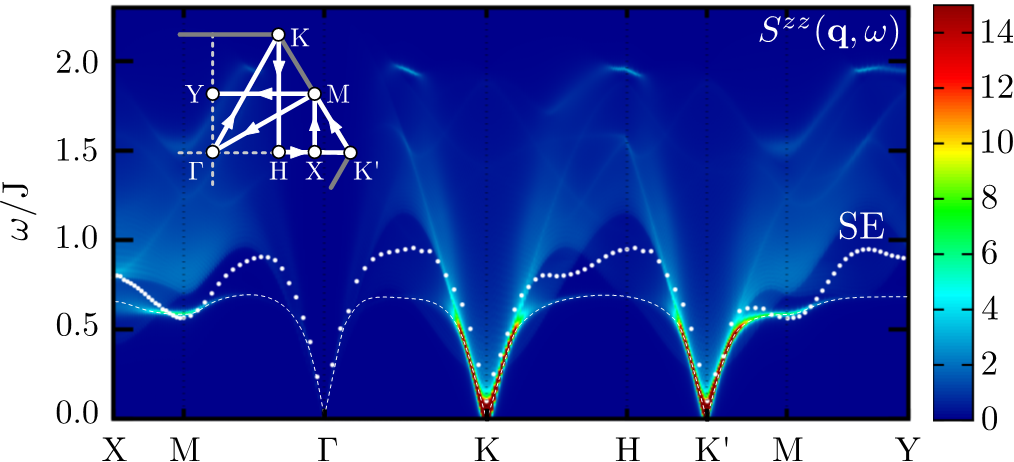June 1, 2019

Quantum magnets are a natural source of new quantum states of matter encompassing different types of spin liquids, crystals of topological solitons and magnetically ordered states with non-classical spin dynamics. Remarkably, this complexity emerges from competing interactions between spin degrees of freedom, that are the basic building blocks of quantum magnets. Neutron scattering probes are key for detecting and characterizing these novel states of matter because they excite magnetic modes with arbitrary wave length ranging from one to hundreds of lattice spaces.
We focus on modeling the dynamical response of quantum magnets, which is relevant for interpreting inelastic neutron scattering measurements. This effort nucleates collaborations among different subfields including experimental neutron scattering sciences, quantum many-body theory, statistical mechanics, computational physics and computer science. The activity is generating a network of collaborators that contribute to developing new approaches and to undertake experiments motivated by novel theoretical results.
We are currently working on the diagnosis of spin liquid states from experimental and theoretical characterization of the dynamical spin structure factor. For this purpose, we are developing techniques ranging from 1/N expansions beyond the saddle point level (see Figure1) to dilute-gas many-body treatments of semi-classical approaches. In addition, we are characterizing the dynamical structure factor of different variants of Kitaev liquids comprising quasi-particles with different abelian and non-abelian anyonic statistics.
For itinerant magnets we are studying the problem of magnetic control of the Berry curvature in momentum space via the combination of magnetic ordering and spin-orbit coupling. The basic goal it to produce spontaneous (induced by magnetic ordering) integer Hall liquids at ambient temperature and to produce large changes of the Hall conductance with small variations of external magnetic field. We are also deriving guiding principles for finding magnetic skyrmion crystals in itinerant magnets. In order to characterize the dynamical spin response of itinerant magnets, we are also developing a generalization of the semiclassical Landau-Lifshitz dynamics that can also be applied to Mott insulators with strong charge fluctuations (intermediate to weak-coupling regime).
Collaborations
ORNL; University of Tennessee, Knoxville; Los Alamos National Laboratory; Georgia Tech; Oxford (UK); University of Toronto (Canada); Instituto de Física de Rosario (Argentina); Duke; National High Magnetic Field Laboratory